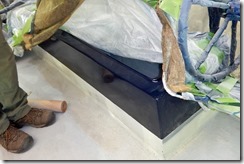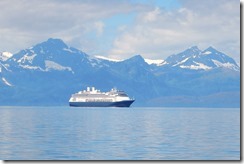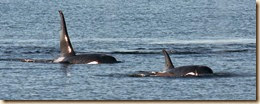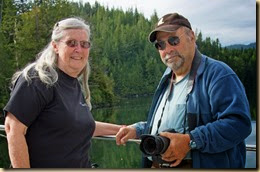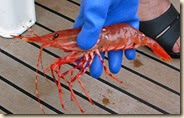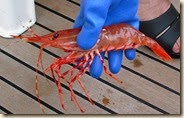Marcia and I often joke about a Labor Day weekend trip more than 20 years ago in which we traveled 550 miles from our Seattle home to Leavenworth (typically a 120 mile drive) via Canada. As explanation, I’ll say our original goal was Hozomeen, a North Cascades peak just south of the border whose shortest access is via Canada. Relentless rain washed that goal away and kept pushing us east searching for blue sky and ultimately to Leavenworth.
Something like that has happened in the 2-1/2 weeks since we left Wrangell on June 5. We are now in Petersburg, about 45 miles from miles from Wrangell via Wrangell Narrows. The route we took was a “little” less direct and totaled about 626 miles. Along the way we took a detour to within 20 miles of Craig on Prince of Wales Island, headed out to Sitka on 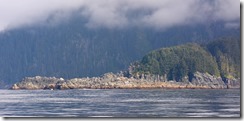 the West coast of Baranof Island via Peril Strait, continued south along the coast of Baranof, rounded Cape Ommaney, recrossed our earlier path (thus completing a circumnavigation of Baranof Island), overshoot Petersburg by going to the north end of Dry Strait (we were able to pick up VHF calls to the Wrangell harbor master), then finally docked at Petersburg on June 21. Thank heavens it’s the journey not just the destination that matters.
the West coast of Baranof Island via Peril Strait, continued south along the coast of Baranof, rounded Cape Ommaney, recrossed our earlier path (thus completing a circumnavigation of Baranof Island), overshoot Petersburg by going to the north end of Dry Strait (we were able to pick up VHF calls to the Wrangell harbor master), then finally docked at Petersburg on June 21. Thank heavens it’s the journey not just the destination that matters.
 The highlights since leaving Sitka include two lovely new (to us) anchorages on the West coast of Baranof Island, Kristoi Basin and Puffin Bay, and a tremendous humpback whale experience outside of Tebenkof Bay. We turned off the engine and watched a pod of 15 to 20 whales feeding (including bubble feeding) over a broad area. To hear them breath from hundreds of yards away is always a moving experience.
The highlights since leaving Sitka include two lovely new (to us) anchorages on the West coast of Baranof Island, Kristoi Basin and Puffin Bay, and a tremendous humpback whale experience outside of Tebenkof Bay. We turned off the engine and watched a pod of 15 to 20 whales feeding (including bubble feeding) over a broad area. To hear them breath from hundreds of yards away is always a moving experience.
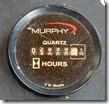 Our boat passed a milestone as well, accumulating 3000 hours on the main engine on the leg into Petersburg. That accumulation is in the 5-1/2 years since we off loaded the boat in Seattle in January 2010.
Our boat passed a milestone as well, accumulating 3000 hours on the main engine on the leg into Petersburg. That accumulation is in the 5-1/2 years since we off loaded the boat in Seattle in January 2010.
From here, we have about a 130 mile journey to Auke Bay, in Juneau. We’ll take it leisurely over 10 or 11 days but the route will probably be more direct than this most recent path.

